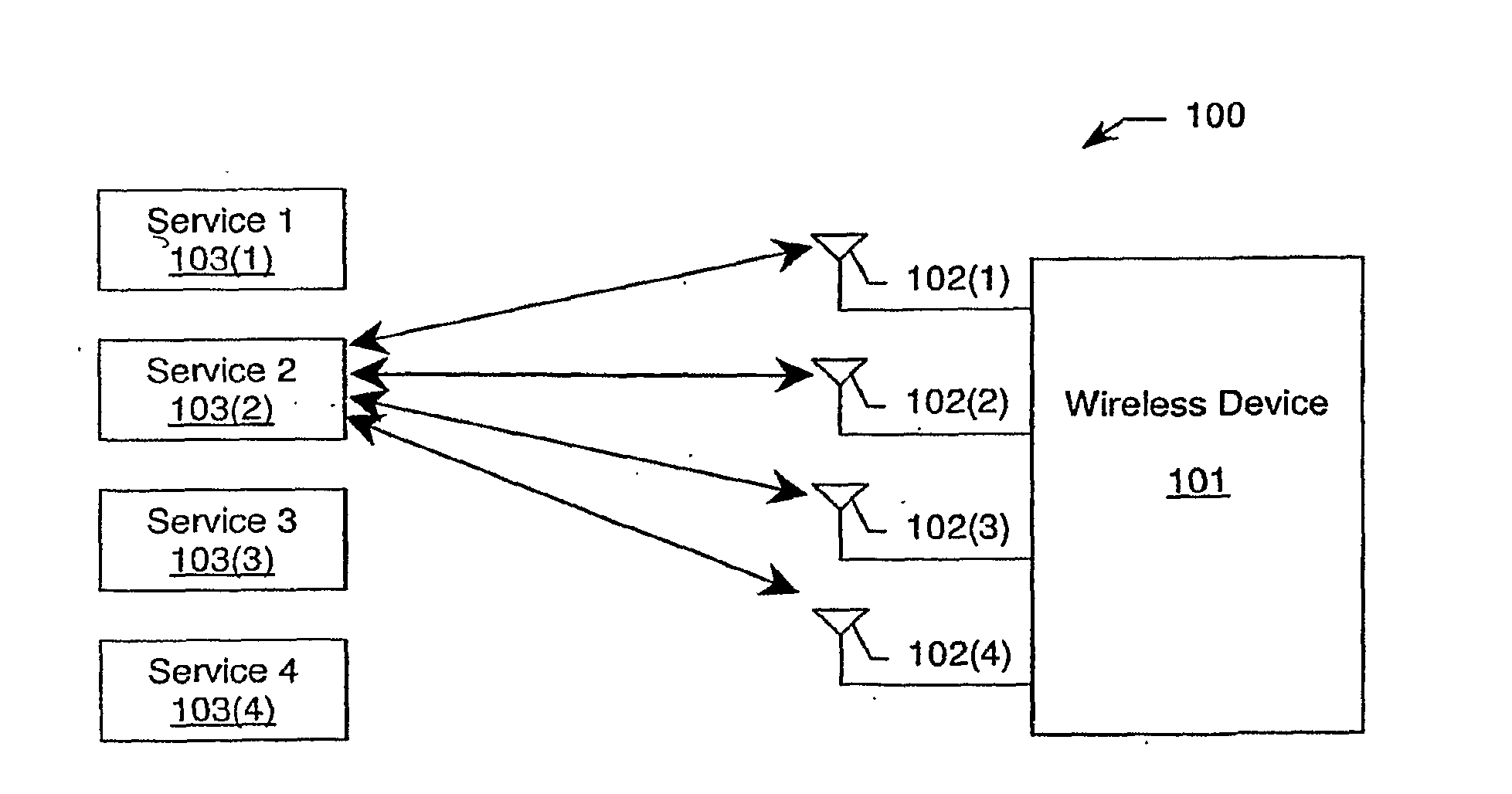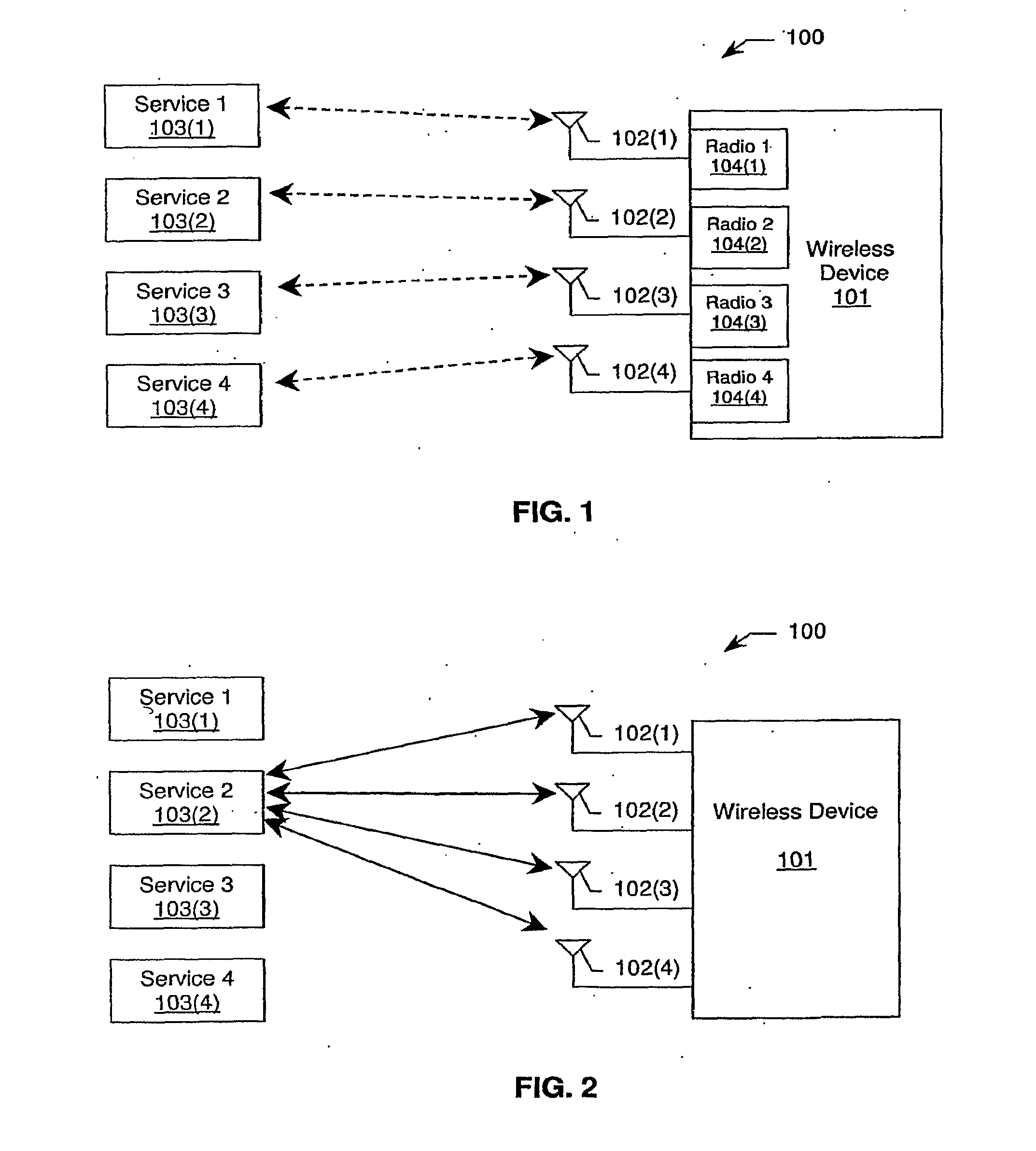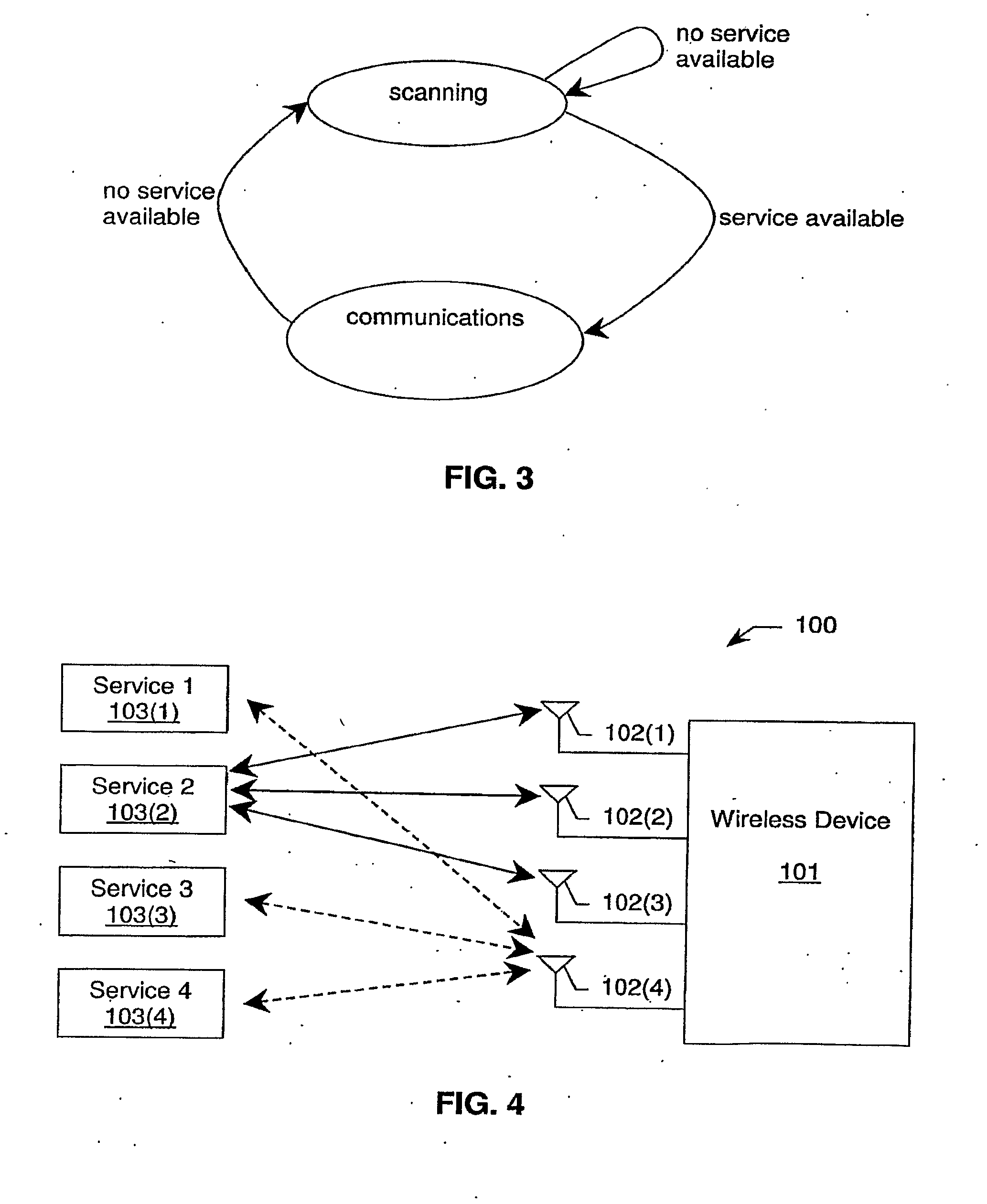Scanning available wireless-device services in multiple wireless-radio technology communication systems
a wireless-radio technology and wireless device technology, applied in the field of wireless-radio technology communication systems, can solve the problems of a long time to synchronize with the base station, a long time to perform a frequency scan and a cell search, and the service of wireless devices can often take between 30 seconds and several minutes
- Summary
- Abstract
- Description
- Claims
- Application Information
AI Technical Summary
Benefits of technology
Problems solved by technology
Method used
Image
Examples
Embodiment Construction
[0025]The present invention, in various embodiments, permits enhancement of consumer experience and cost savings by combining the use of multiple antennas with the ability to scan disparate wireless services dynamically, without user intervention, to locate the best-possible or least-costly service alternative. The existence of multiple antennas allows for simultaneous scanning of the multiple services, thus reducing the overall scan time significantly. Once a particular service is selected, the existence of multiple antennas can then be used to achieve the effects of diversity, including (i) eliminating multi-path signal distortion and (ii) implementing adaptive or “smart” antenna arrays whose signal-processing algorithms are adapted to continuously distinguish between desired signals, multi-path, and interfering signals and to calculate the arrival directions of the desired signals. Once the best-possible or least-costly available service alternative is established, the wireless d...
PUM
 Login to View More
Login to View More Abstract
Description
Claims
Application Information
 Login to View More
Login to View More - R&D
- Intellectual Property
- Life Sciences
- Materials
- Tech Scout
- Unparalleled Data Quality
- Higher Quality Content
- 60% Fewer Hallucinations
Browse by: Latest US Patents, China's latest patents, Technical Efficacy Thesaurus, Application Domain, Technology Topic, Popular Technical Reports.
© 2025 PatSnap. All rights reserved.Legal|Privacy policy|Modern Slavery Act Transparency Statement|Sitemap|About US| Contact US: help@patsnap.com



